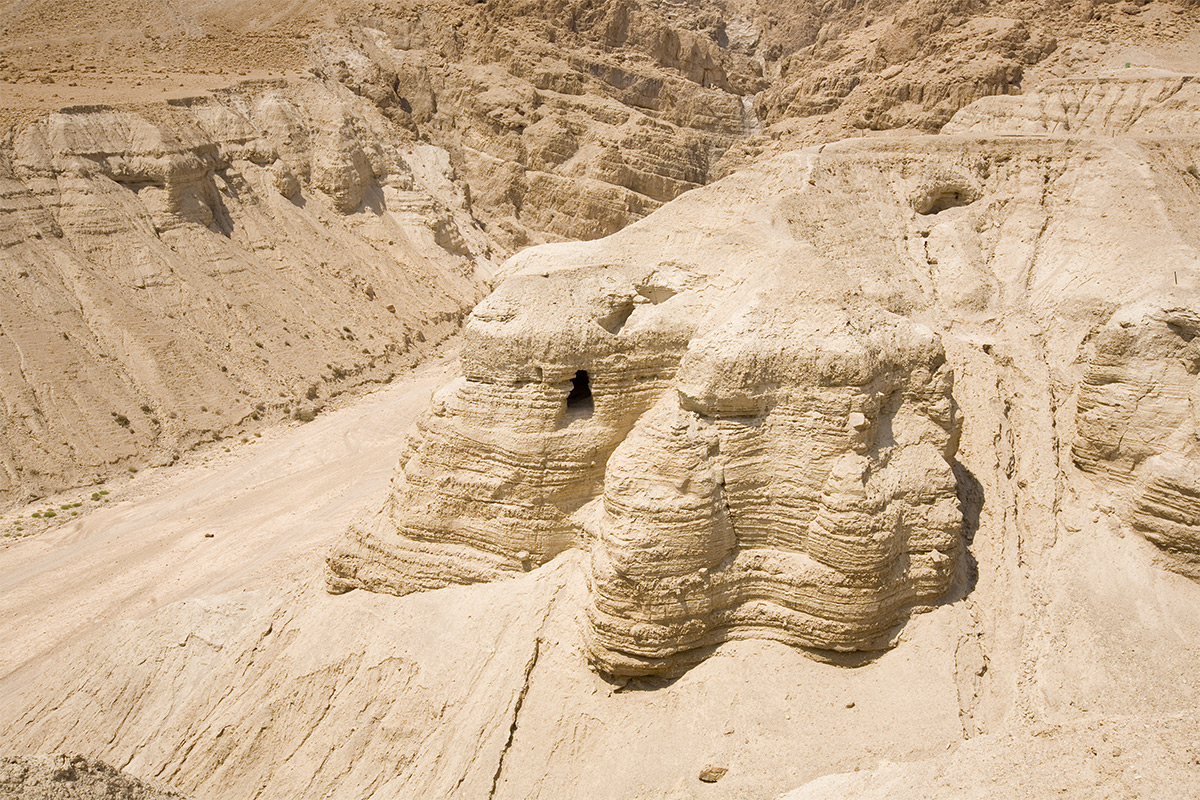Could This Newfound Cave Hold More Dead Sea Scrolls?

Archaeologists are excavating a newfound cave in Qumran, with the hope of finding new Dead Sea Scrolls.
The Dead Sea Scrolls were discovered in 12 caves and date back around 2,000 years and consist of thousands of fragments from more than 900 manuscripts, including numerous copies of texts from the Hebrew Bible. The scrolls were written in Hebrew, Aramaic and Greek, but who, exactly, wrote them is a matter of debate among scholars. Many experts believe that members of a Jewish sect called the Essenes wrote the scrolls at Qumran. Eleven of the Dead Sea Scroll caves were discovered between 1947 and 1956 near the newfound cave, in what is now the West Bank, near the shore of the Dead Sea.
In 2017, archaeologists announced the discovery of a 12th cave, though they said the cave had been looted in the mid-20th century. Inside the cave, they discovered only one blank scroll, along with the remains of jars, cloth and a leather strap that would have been used to wrap and store the scrolls, according to the team, led by Oren Gutfeld, an archaeologist with the Hebrew University of Jerusalem's Institute of Archaeology. [See Images of the Dead Sea Scrolls]
Gutfeld and Randall Price, of Liberty University in Lynchburg, Virginia, are now leading an archaeology team that is excavating this newfound cave.
"Dr. Gutfeld and I have been at Qumran since December, working with our team on excavating a new cave in the Qumran area," Price told Live Science in an email. No other details about this "new cave" have been released, but the team will release a statement soon, Price said.
In 2016, the Israel Antiquities Authority announced that it is carrying out a program to find and excavate any undiscovered caves in the Judaean Desert. In the past few years, there have been a number of instances in which looters have been caught carrying the remains of scrolls.
Archaeologists with the Israel Antiquities Authority say it's possible that more scrolls will be found in caves that are yet to be discovered. Scrolls were sometimes hidden in caves, particularly around 70 (after Jerusalem fell to a Roman army) and between A.D. 132 and 136, when there was a failed rebellion against the Roman Empire.
Sign up for the Live Science daily newsletter now
Get the world’s most fascinating discoveries delivered straight to your inbox.
Original article on Live Science.

Owen Jarus is a regular contributor to Live Science who writes about archaeology and humans' past. He has also written for The Independent (UK), The Canadian Press (CP) and The Associated Press (AP), among others. Owen has a bachelor of arts degree from the University of Toronto and a journalism degree from Ryerson University.









